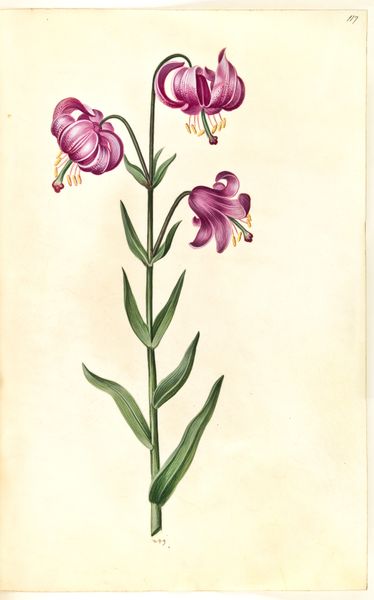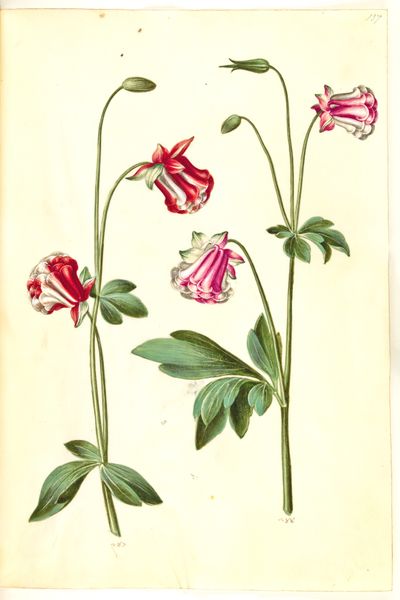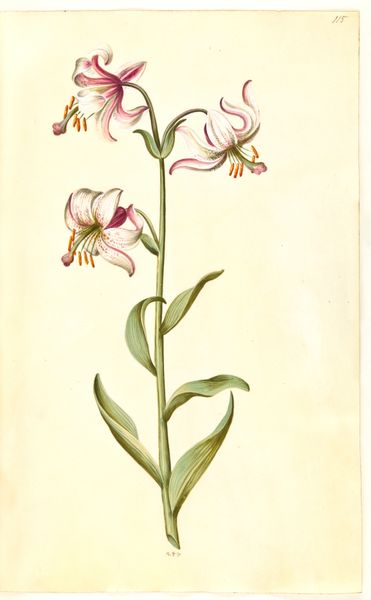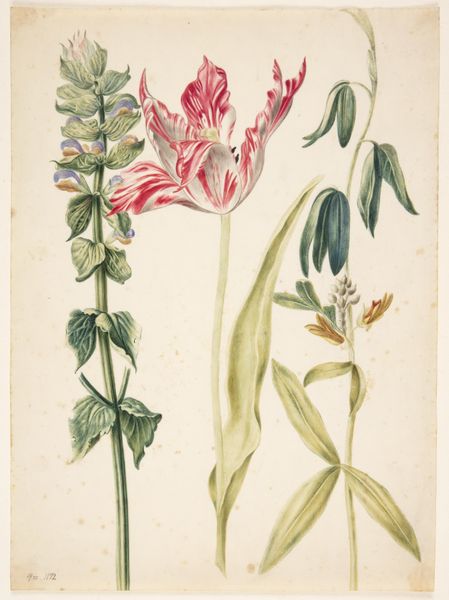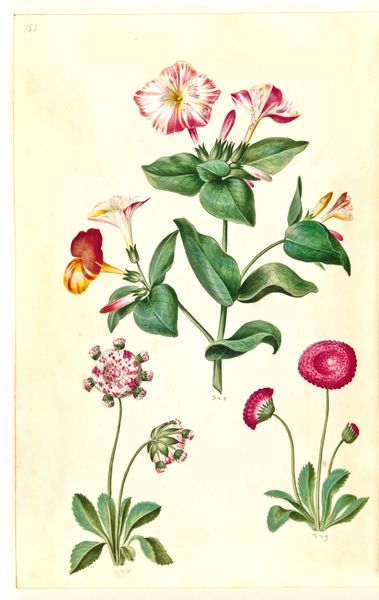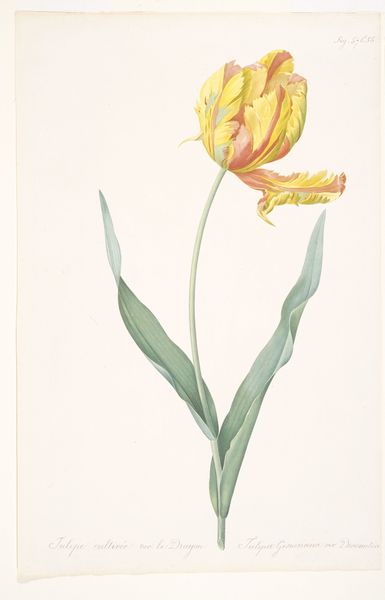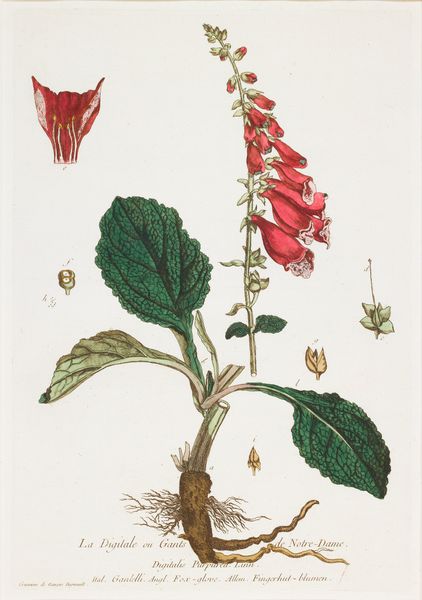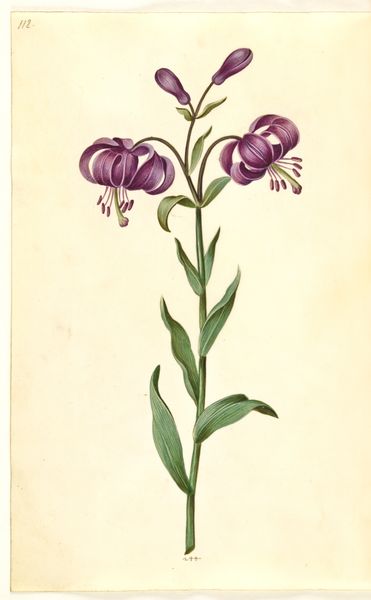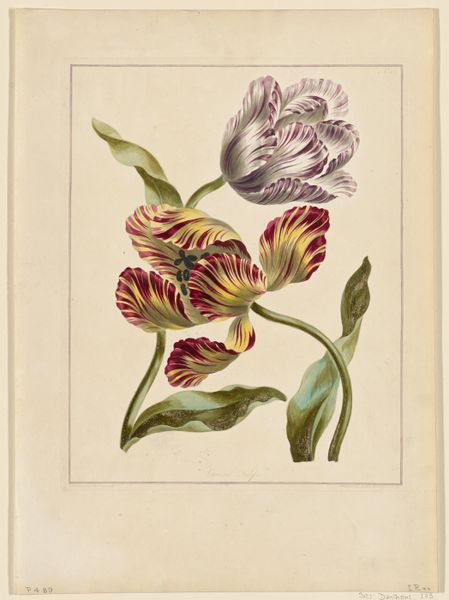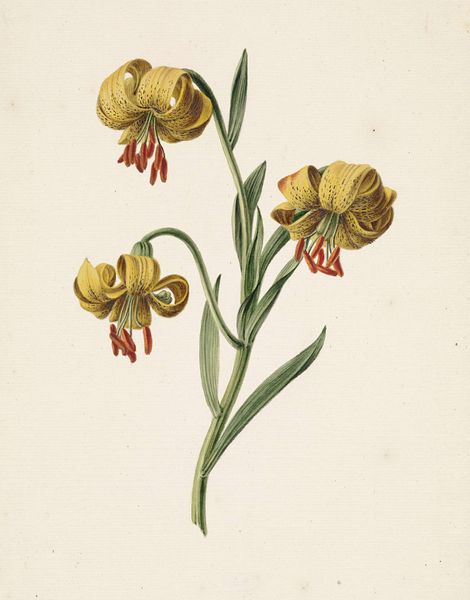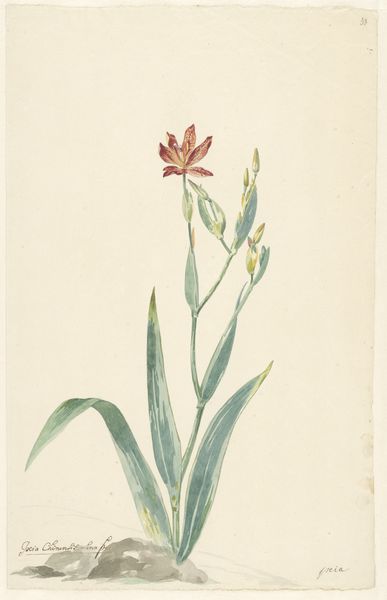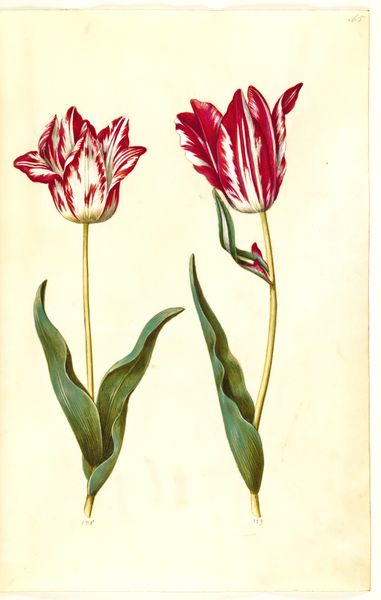
drawing, print, watercolor
#
drawing
# print
#
watercolor
#
watercolour illustration
#
botanical art
#
realism
Dimensions: 20 1/8 x 13 7/8 in. (51.12 x 35.24 cm) (sheet, margins cut)
Copyright: Public Domain
De Gouy's botanical illustration, "Lilium superbum," captures the essence of the Superb Lily with its vibrant colors and meticulous detail. The lily, a symbol deeply embedded in our cultural memory, represents purity, resurrection, and, paradoxically, erotic love. Note how the lily's form, with its upward-reaching petals, echoes similar motifs across cultures. Think of the lotus in ancient Egypt or the fleur-de-lis in French heraldry. Each embodies a reaching towards the divine, yet grounded in earthly sensuality. The lily's dual nature speaks to our collective subconscious. It's a reminder of the cyclical patterns of life, death, and rebirth. Consider how the Victorians used floral symbolism to express unspoken desires and emotions. Even today, the lily evokes a sense of grace and quiet strength, engaging us on a profound emotional level. This symbol has resurfaced, evolved, and taken on new meanings in different historical contexts.
Comments
minneapolisinstituteofart about 2 years ago
⋮
Botanical illustrators working in the fifteenth and sixteenth centuries devoted themselves to the medicinal qualities of plants and sought to render plant structure and function as precisely as they could. Later, European explorers brought specimens back from exotic locales, and artists carefully reproduced them for an audience fascinated by new discoveries. By the eighteenth and nineteenth centuries, artists had shifted their emphasis from scientific illustration to the innate beauty of the plant or flower. Perhaps the most recognizable name in botanical illustration is the incomparable Pierre-Joseph Redouté (1759-1840). Often called the "Raphael of Flowers," Redouté set a new standard in the field for his sumptuous renditions of single blooms and entire bouquets. Redouté's paintings, like those of other botanical artists, were translated into engravings and painstakingly finished by hand. These exquisite prints, most executed by French printmakers, came to Mia's Department of Prints and Drawings from the collection of Dwight and Helen Minnich, who had a special fondness for botanical and zoological prints.
Join the conversation
Join millions of artists and users on Artera today and experience the ultimate creative platform.
